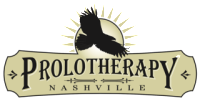There are three issues that prevent large numbers of physicians from becoming highly skilled practitioners of Prolotherapy techniques: reimbursement, diagnosis, and training opportunities.
a.) Reimbursement: if practitioners ‘take insurance assignment’, then they must by contract accept whatever insurance companies ‘feel like paying’ for a service, and have no recourse to be paid for services or supplies. Therefore, they often do not receive enough reimbursement from these treatments to even pay for the materials that are injected, much less pay staff or themselves for this work. There is therefore a strong financial incentive to NOT offer this treatment.
b.) Diagnosis: most practitioners, based on their training and ‘education’ by drug company representatives, are not aware that healable connective tissue damage plays ANY significant role in the symptoms their patients describe. (read Holley’s and Mark’s personal stories). Based on what they ‘think’ is wrong (inflammation and things seen on imaging studies, like ‘bulging discs’, or things they are ‘trained’ to think, like ‘nerve pinches and sciatica’), this treatment—triggering connective tissue healing—does not even make sense. It is interesting that, as Prolotherapy was beginning to taught in national medical meetings, and as research and clinical results began to accumulate to support the use of this treatment by the 1950’s, and as it become more ‘popular’ among physicians in the late 1950’s, the shifts in diagnostic thinking toward ‘inflammation’ as the cause of ‘body aches and pains’, and the emerging reliance on imaging studies for ‘diagnosis’, and the resulting shift away from physical examinations caused most physicians to simply view this treatment as irrelevant. People ceased to have ‘problems’ that Prolotherapy made sense to treat…at least in the minds of practitioners. And this is still the case. Fortunately, at last, the science is catching up, refuting the ideas that cause Prolotherapy to NOT make sense. What really does not make sense to practitioners is why we get such good results with this treatment. My goal is to show patients, and practitioners, why these results make perfect sense.
c.) Training. This is a full-fledged discipline of medicine, involving a large array of diagnostic and therapeutic considerations. There is not ‘residency’ or ‘fellowship’ formal teaching program to thoroughly instruct physicians in this discipline. It therefore requires a considerable amount of self-study, coupled with accessing the limited ‘training’ opportunities that are available. But the only way to become trained beyond the ‘basic’ level is extensive mentoring by an expert in the field. There are simply very few physicians who have the knowledge and experience to be effective mentors. Fewer still are willing to take the time and make the sacrifices that such training requires, of both teachers and trainees. I have been teaching in national training conferences for several years, and am engaged in mentoring physicians who desire to learn this discipline.

Leave A Comment